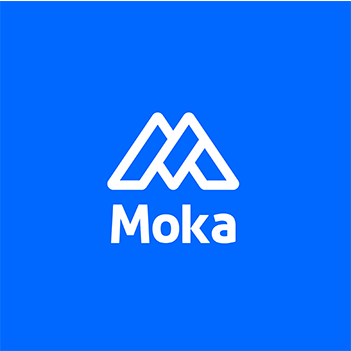A Practical Guide to Workforce Planning in 2025

Workforce planning plays a vital role in helping businesses thrive in 2025. Aligning it with your business strategy ensures employees contribute to long-term goals and positions workforce planning as a critical process, not just an HR task. The workforce landscape continues to evolve, with trends like hybrid work, demographic shifts, and automation reshaping how organizations operate. Companies that fail to adapt risk disruptions, as 70% of businesses facing workforce shortages report operational setbacks. Strategic planning helps you anticipate changes, address skills gaps, and build a resilient workforce ready for future challenges.
Key Takeaways
Match workforce planning with business goals to help your team succeed.
Check your team's skills often to find strengths and gaps.
Use data to make smart choices, plan ahead, and hire better.
Plan around skills to stay flexible and ready for challenges.
Work with others to build a strong plan for now and later.
Defining Workforce Planning and Its Strategic Alignment
What is Workforce Planning?
Workforce planning is the process of ensuring your organization has the right people, with the right skills, in the right roles, at the right time. It involves analyzing your current workforce, forecasting future needs, and creating strategies to bridge any gaps. A strong workforce planning framework helps you align your talent needs with your company’s goals.
The core components of workforce planning include:
Define clear business goals and objectives to guide your planning efforts.
Map out the skills, competencies, and staffing levels required to meet these goals.
Conduct regular gap analyses to identify areas where your workforce falls short.
Foster collaboration between HR and other departments to ensure alignment.
Implement targeted training programs to address skills gaps.
Use workforce planning tools and analytics to make data-driven decisions.
Build flexibility into your strategy to adapt to changing needs.
By following these steps, you can create a workforce planning framework that supports both short-term and long-term success.
The Importance of Aligning Workforce Planning with Business Strategy
Aligning workforce planning with your business strategy ensures your workforce directly contributes to your company’s growth. Without this alignment, workforce planning risks becoming an isolated HR activity. Instead, it should be a strategic process that connects talent management with organizational goals.
Your ability to achieve business objectives depends on having the right talent in place. Strategic workforce planning helps you anticipate the skills and roles needed to meet future demands. It also ensures that every workforce initiative supports your company’s priorities. For example, HR and leadership can collaborate to create targeted strategies that address critical roles and workforce vulnerabilities. This approach drives growth, continuity, and competitiveness.
Benefits of Strategic Workforce Planning for 2025
Strategic workforce planning offers measurable benefits that can position your organization for success in 2025:
Align workforce planning with business goals to achieve desired growth.
Address workforce gaps to ensure your team has the skills needed to succeed.
Reduce costs by optimizing hiring and training processes.
Mitigate risks by identifying critical roles and preparing for potential challenges.
Adapt to demographic changes and avoid future skills shortages.
Improve talent management by promoting and recruiting effectively.
Enhance long-term planning to stay ahead in a rapidly changing environment.
By investing in effective workforce planning, you can build a resilient and adaptable workforce ready to meet the challenges of 2025 and beyond.
Steps to Align Workforce Planning with Business Strategy
Assessing Current Workforce Capabilities
To align workforce planning with your business strategy, start by evaluating your current workforce capabilities. This step helps you understand the strengths and weaknesses of your team and identify areas that need improvement.
You can use several methods to assess your workforce effectively:
Adopt a continuous planning approach. Treat workforce planning as an ongoing process to adapt quickly to market changes.
Make the most of technology, especially AI. Advanced tools can enhance decision-making and pinpoint skills gaps.
Develop a skills intelligence framework. A detailed skills taxonomy aligns talent with business needs and ensures strategic alignment.
By leveraging these methods, you can create a clear picture of your workforce’s current state. This insight forms the foundation of an effective workforce planning framework.
Forecasting Future Workforce Needs
Once you understand your current workforce, the next step involves forecasting future needs. This process ensures you prepare for upcoming challenges and opportunities.
Several workforce planning tools and frameworks can assist with forecasting:
Tool/Framework | Description |
|---|---|
Comprehensive tool with forecasting capabilities for talent management scheduling. | |
Ceridian Dayforce | Offers real-time data capabilities for predictive analytics in staffing forecasting. |
PeopleFluent Talent Management | Focuses on optimizing talent management with integrated forecasting and scheduling features. |
SAP SuccessFactors Workforce Analytics | Provides historical and predictive data for forecasting staffing needs. |
UKG Dimensions | Focuses on workforce scheduling and forecasting to optimize labor costs and staffing needs. |
Using these tools, you can predict staffing levels, skill requirements, and other critical factors. This step ensures your workforce planning aligns with your strategic goals.
Identifying Skills Gaps and Critical Roles
Identifying skills gaps and critical roles is essential for strategic workforce planning. This step helps you address vulnerabilities and build a resilient team.
Common skills gaps and their impacts include:
Skill Gap | Impact on Organization |
|---|---|
Hinders sustainable growth and adaptation to market changes due to lack of long-term planning skills. | |
Employee Well-being Management | Leads to higher turnover rates and reduced productivity due to ineffective well-being programs. |
Data Analysis Skills | Results in missed opportunities for optimization as organizations struggle to derive insights from data. |
Soft Skills | Increases communication issues and teamwork challenges, affecting client relationships and project success. |
Project Management Skills | Contributes to project failures due to inadequate planning and execution. |
By addressing these gaps, you can ensure your workforce is equipped to meet future needs. Focus on critical roles that directly impact your strategic objectives. This approach strengthens your workforce and positions your organization for long-term success.
Translating Business Goals into Workforce Objectives
Translating business goals into actionable workforce objectives ensures your team works toward shared priorities. Start by engaging employees in small, interactive discussions. These conversations help shape the company’s vision and foster a sense of autonomy and commitment. When employees understand the bigger picture, they feel more connected to their roles.
Align individual objectives with broader strategic goals through a cascading process. This approach ensures every team member knows how their work contributes to the organization’s success. Use the SMART criteria—specific, measurable, achievable, relevant, and time-bound—to set clear objectives for individuals and departments. This method eliminates ambiguity and provides measurable benchmarks for progress.
Evaluate your operational processes to identify inefficiencies. Streamlining workflows ensures your workforce focuses on high-impact tasks that align with strategic priorities. Assign clear roles and responsibilities to enhance communication and execution. When everyone knows their role, collaboration becomes seamless, and objectives are met more efficiently.
Effective workforce planning requires you to connect business goals with workforce needs. By aligning these elements, you create a roadmap that drives both individual and organizational success.
Implementing and Monitoring Workforce Strategies
Implementing workforce strategies requires careful planning and execution. Start by using workforce management software to make data-driven decisions. Tools like these help you analyze trends and predict future needs, ensuring your workforce planning remains proactive.
Align roles and responsibilities to prevent dissatisfaction. When employees understand their tasks and how they contribute to the company’s goals, engagement improves. Strategic workforce planning also helps you anticipate staffing needs, avoiding overstaffing or understaffing issues.
Set SMART goals to motivate employees and clarify expectations. These goals provide a clear direction and measurable outcomes, ensuring everyone stays on track. Monitor employee engagement levels regularly. High engagement boosts productivity and reduces turnover, creating a more stable workforce.
Support employee growth by offering training and development opportunities. This investment not only addresses skills gaps but also prepares your team for future challenges. Flexible work arrangements, such as hybrid schedules, can also enhance satisfaction and adaptability.
By implementing and monitoring these strategies, you ensure effective workforce planning that aligns with your business objectives and adapts to changing needs.
Emerging Trends in Workforce Planning for 2025

AI and Automation in Workforce Planning
AI and automation are transforming workforce planning by streamlining processes and improving decision-making. These technologies help you optimize workforce supply and demand while addressing future needs. Key advancements include:
AI-driven scheduling systems that create efficient employee schedules using historical and real-time data.
Intelligent task allocation tools that match employees to tasks based on their qualifications and performance.
AI-powered recruitment tools that simplify candidate screening and interview scheduling, reducing bias in hiring.
Real-time performance monitoring systems that provide continuous feedback to employees.
Collaborative robots (cobots) that enhance workforce capabilities in industries like manufacturing and logistics.
Automation tools that personalize employee engagement and retention strategies.
By integrating these tools into your strategic workforce planning, you can improve efficiency, reduce costs, and build a workforce ready for future challenges.
Managing Hybrid and Remote Workforces
Hybrid and remote workforces have become a permanent part of the modern workplace. Managing these arrangements effectively is crucial for workforce planning. You may face challenges such as maintaining visibility, measuring employee engagement, and preserving company culture. Blurred work-life boundaries and inclusivity issues can also arise.
However, hybrid and remote work offer significant opportunities. Flexible work arrangements can boost productivity and employee satisfaction when managed strategically. To succeed, focus on creating clear communication channels, setting measurable goals, and using unbiased performance monitoring tools. These steps ensure your team remains engaged and aligned with organizational objectives, even in a distributed work environment.
Skills-Based Workforce Planning for Future Readiness
A skills-based approach to workforce planning prepares your organization for future needs by focusing on competencies rather than job titles. Companies adopting this method are 63% more likely to meet or exceed financial goals. This approach offers several benefits:
It drives skill development and retention, ensuring your team stays competitive.
It enhances efficiency and supports enterprise-wide growth.
It equips your organization to adapt to technological and business changes.
By prioritizing skills over roles, you increase agility and adaptability. This strategy enables you to respond quickly to market shifts and mitigate talent shortages. Incorporating skills-based planning into your talent management framework ensures effective workforce planning that aligns with your strategic goals.
Leveraging Workforce Analytics for Data-Driven Decisions
Workforce analytics empowers you to make informed decisions by turning data into actionable insights. It allows you to identify trends, predict future needs, and align workforce planning with your strategic goals. By leveraging analytics, you can optimize your workforce and stay ahead in a competitive environment.
Several tools can help you harness the power of workforce analytics:
HR analytics platforms for tracking employee performance and trends.
Business intelligence tools to analyze workforce data alongside organizational metrics.
Predictive analytics tools to forecast staffing needs and skills gaps.
Employee engagement and feedback tools to measure satisfaction and productivity.
Workforce planning tools to align talent strategies with business objectives.
To make the most of these tools, focus on key metrics that provide valuable insights:
Employee Turnover Rates – Understand why employees leave and how to improve retention.
Diversity Ratios – Track progress toward building an inclusive workforce.
Employee Engagement Scores – Measure how motivated and committed your team feels.
Typical Career Path – Identify patterns in employee growth and development.
Training Opportunities – Evaluate the effectiveness of learning programs.
Salary Distribution – Ensure fair and competitive compensation practices.
Using these metrics, you can uncover patterns and make data-driven decisions that align with your strategic workforce planning. For example, analyzing turnover rates can help you address retention challenges, while engagement scores reveal areas needing improvement.
Workforce analytics also enhances adaptability. By monitoring real-time data, you can respond quickly to changes in the market or workforce needs. This proactive approach ensures your organization remains resilient and ready for future challenges.
Best Practices for Strategic Workforce Planning

Engaging Stakeholders in Workforce Planning
Involving stakeholders in workforce planning ensures alignment between your workforce strategies and business goals. This collaboration fosters commitment and creates a well-rounded plan that addresses both current and future needs. To engage stakeholders effectively, you should:
Communicate consistently to ensure everyone understands your organization’s goals.
Actively involve stakeholders through meetings, surveys, and discussions to gather input and foster ownership.
Ensure employees know their roles in the strategic plan, promoting engagement and alignment.
Engaging stakeholders from diverse areas, such as senior management, HR, line managers, and external partners, brings varied perspectives to the table. This approach leads to more realistic and actionable plans. It also builds buy-in, making implementation smoother and more successful.
Using Technology to Enhance Workforce Planning
Technology plays a vital role in enhancing workforce planning. Advanced tools help you predict future needs, identify talent gaps, and optimize hiring strategies. Companies like IBM, Google, and Amazon use cutting-edge technologies to stay ahead. For example:
IBM uses artificial intelligence and analytics to forecast skills requirements.
Google employs algorithms to improve hiring processes and retention.
Amazon leverages predictive analytics to optimize workforce needs.
By integrating these tools into your planning process, you can make data-driven decisions and improve efficiency. Technology also supports effective workforce planning by providing real-time insights, helping you adapt to changes quickly.
Building Adaptability and Resilience in the Workforce
Building adaptability and resilience into your workforce ensures long-term success. Start by fostering a culture of flexibility and continuous learning. Encourage employees to view challenges as opportunities for growth. Focus on skills development to prepare your team for future demands.
Scenario planning and contingency strategies help you navigate uncertainties. Strong leadership and communication skills are essential for guiding your team through change. Additionally, promoting diversity and inclusion strengthens your workforce by bringing varied perspectives and ideas.
To enhance resilience, prioritize wellness and self-care initiatives. A healthy workforce is better equipped to handle challenges. Embrace experimentation and calculated risks to drive innovation. These strategies create a workforce that can adapt to market shifts and thrive in any environment.
Aligning Workforce Planning with DEI Goals
Aligning workforce planning with diversity, equity, and inclusion (DEI) goals creates a stronger, more innovative organization. A diverse workforce brings unique perspectives that foster creativity and drive better decision-making. Teams with varied backgrounds often approach challenges differently, leading to more informed and effective solutions. Additionally, a workforce that reflects the diversity of your customer base helps you connect with and serve your market more effectively.
To align workforce planning with DEI goals, start by using strategic workforce planning to meet diversity initiatives. Identify areas where your organization lacks representation and create actionable plans to address these gaps. For example, you can broaden recruitment efforts to reach underrepresented groups or partner with organizations that support diverse talent pipelines. These steps ensure your workforce reflects the communities you serve.
Building an inclusive work culture is equally important. Employees need to feel valued and supported to contribute their best work. Focus on creating policies and practices that promote equity, such as transparent pay structures and unbiased performance evaluations. Training programs on unconscious bias and cultural competency can also help foster a more inclusive environment.
Strategic alignment between DEI goals and workforce planning delivers tangible benefits. It drives culture change, enhances innovation, and strengthens your organization’s ability to adapt to a changing world. By prioritizing DEI in your workforce strategies, you position your organization for long-term success while creating a workplace where everyone can thrive.
Aligning workforce planning with your business strategy ensures your workforce directly supports organizational goals. This systematic approach involves understanding business objectives, analyzing current capabilities, and forecasting future needs. By integrating workforce planning into your strategic processes, you position it as a vital business function rather than an isolated HR task. Collaboration between HR and leadership further strengthens this alignment, ensuring talent initiatives drive growth and success.
Emerging trends and best practices play a critical role in staying competitive. Data-driven processes help you anticipate talent needs, while HR analytics reduce guesswork in decision-making. Engaging stakeholders fosters inclusivity and diversity, which enhances innovation and performance. Companies adopting these strategies consistently outperform competitors relying on outdated methods.
Continuous monitoring and adaptability are essential for effective workforce planning. Regular reviews allow you to adjust plans to meet changing market conditions and technological advancements. Proactive risk management identifies challenges early, while real-time insights improve decision-making. These practices optimize resource allocation, reduce costs, and ensure your workforce remains resilient in a dynamic environment.
FAQ
What is the first step in workforce planning?
Start by assessing your current workforce capabilities. Identify strengths, weaknesses, and areas for improvement. Use tools like skills inventories or employee assessments to gather data. This step helps you understand your workforce’s readiness to meet business goals.
How can you address skills gaps effectively?
Focus on targeted training programs and upskilling initiatives. Offer learning opportunities that align with your business needs. Partner with educational institutions or use online platforms to provide flexible training options. This approach ensures your team stays competitive.
Why is workforce analytics important?
Workforce analytics helps you make data-driven decisions. It identifies trends, predicts future needs, and highlights areas for improvement. By using analytics, you can optimize hiring, reduce turnover, and align workforce strategies with business objectives.
How do you manage a hybrid workforce successfully?
Set clear communication channels and measurable goals. Use collaboration tools to maintain visibility and track progress. Provide training for managers to lead remote teams effectively. These steps ensure engagement and productivity in a hybrid work environment.
What role does diversity play in workforce planning?
Diversity fosters innovation and improves decision-making. A diverse workforce reflects your customer base, enhancing market connection. Align workforce planning with DEI goals by addressing representation gaps and creating inclusive policies. This strategy strengthens your organization’s adaptability and performance.
See Also
Enhancing Team Productivity With Effective Talent Management
Achieving Hiring Excellence Through AI Solutions By MokaHR
Navigating Applicant Tracking Systems To Discover Elite Talent
Revolutionizing Recruitment Strategies With MokaHR's Unique Benefits
Enhancing Employee Satisfaction With MokaHR's Management Solutions
From recruiting candidates to onboarding new team members, MokaHR gives your company everything you need to be great at hiring.
Subscribe for more information

